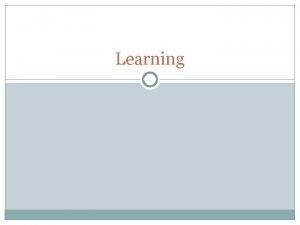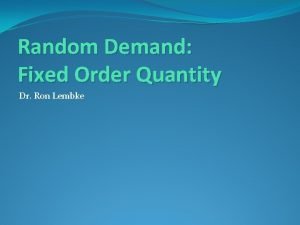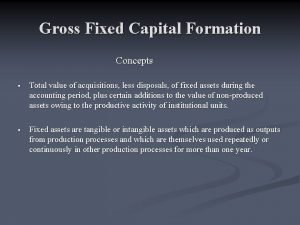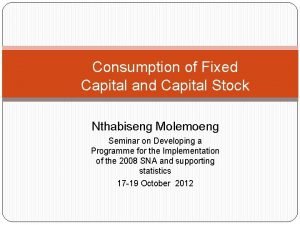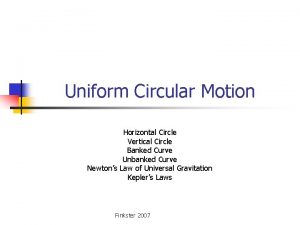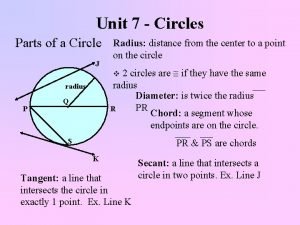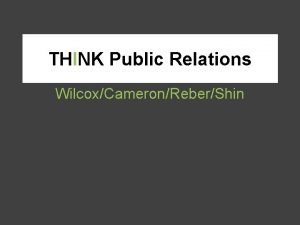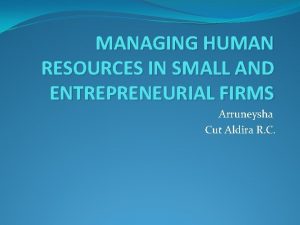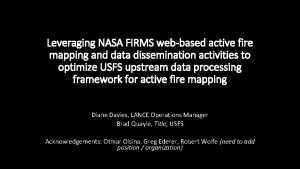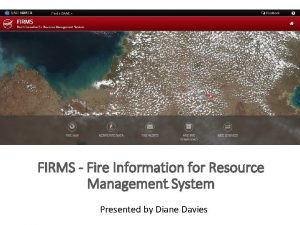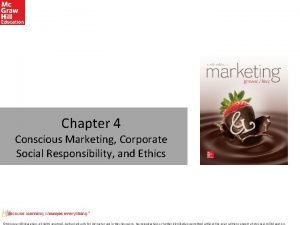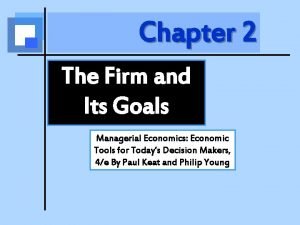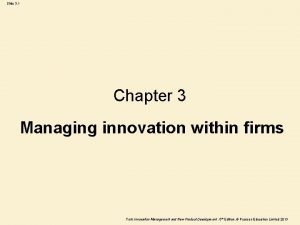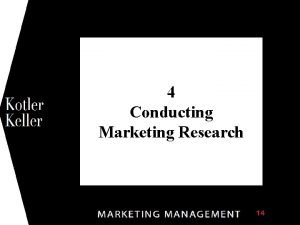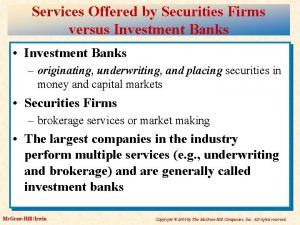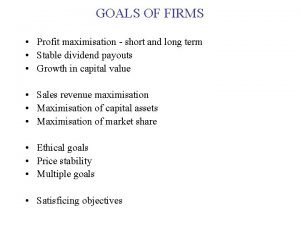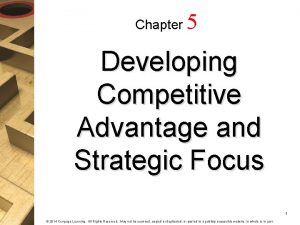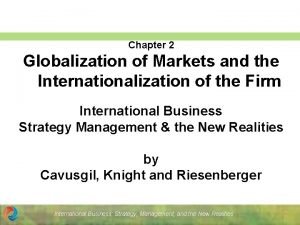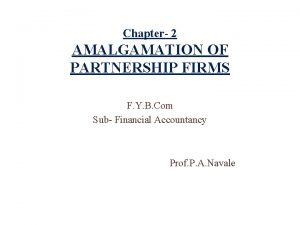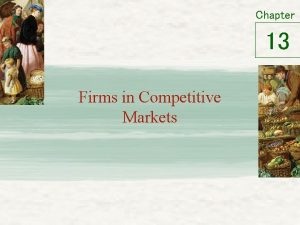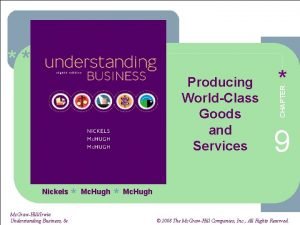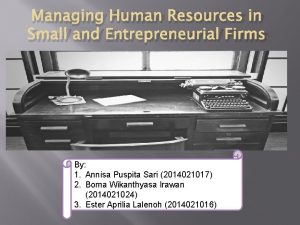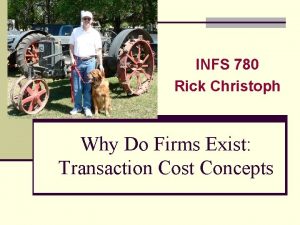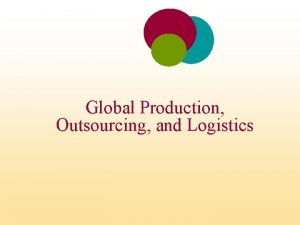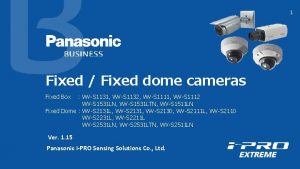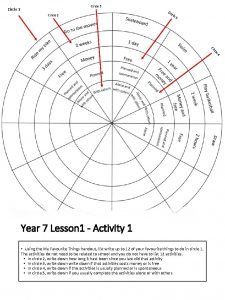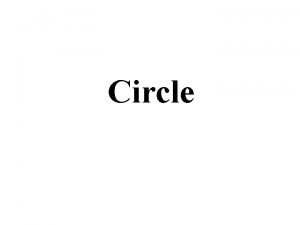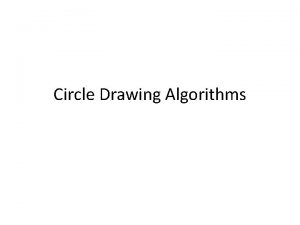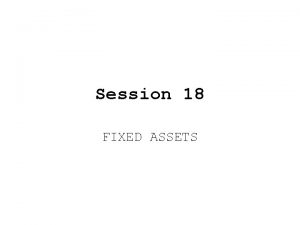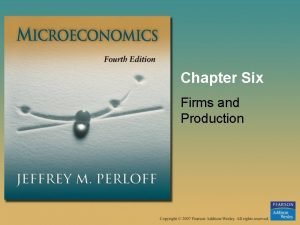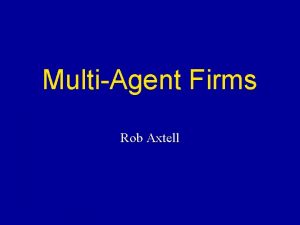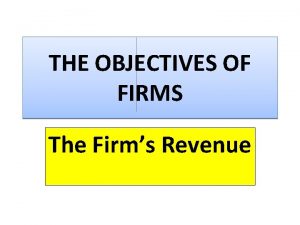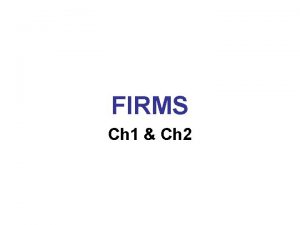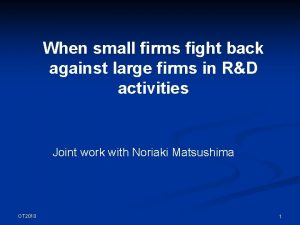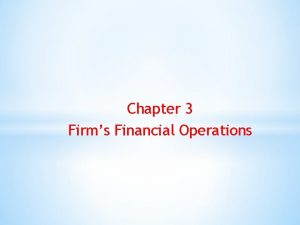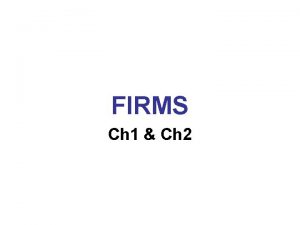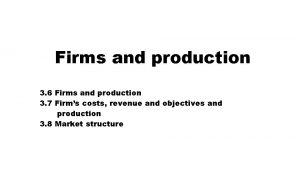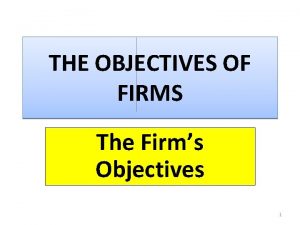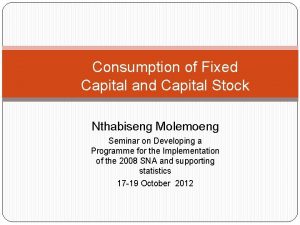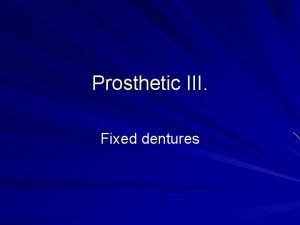Types of the firms capital Capital circle Fixed













































































- Slides: 77

Types of the firms’ capital. Capital circle. Fixed capital

Contents 1. Types of firms’ capital. 2. Firm fixed assets structure.

1. Types of firms’ capital Firm (manufacture, enterprise, factory, organization) – producer which combines the factors of production in order to create goods/services and to get profit In economics, capital consists of assets that can enhance one's power to perform economically useful work. For example, in a fundamental sense a stone or an arrow is capital for a hunter-gatherer who can use it as a hunting instrument, while roads are capital for inhabitants of a city. Capital goods, real capital, or capital assets are already -produced, durable goods or any non-financial asset that is used in production of goods or services.

1. Types of firms’ capital Capital is distinct from land (or non-renewable resources) in that capital can be increased by human labor. At any given moment in time, total physical capital may be referred to as the capital stock (which is not to be confused with the capital stock of a business entity). Capital is an input in the production function. Homes and personal autos are not usually defined as capital but as durable goods if they are not used in a production of saleable goods and services.

1. Types of firms’ capital Every producer have (in ownership or possession): 1. Financial capital – free cash intended for subsequent expenditure on industrial and commercial activities for profit. It consists of own, borrowed and redistributed funds (equity capital, debt capital, and specialty capital). - equity capital - company's assets minus its liabilities. Some businesses are funded entirely with equity capital, which is cash invested by the shareholders or owners into a company that has no offsetting liabilities. Although it is the favored form of capital for most businesses because they don't have to pay it back, it can be extraordinarily expensive. In addition, it could require massive amounts of work to grow their enterprises if they are funded this way. Microsoft is an example of such an operation, and it generates high enough returns to justify a pure equity capital structure.

1. Types of firms’ capital Every producer have (in ownership or possession): 1. Financial capital – free cash intended for subsequent expenditure on industrial and commercial activities for profit. It consists of own, borrowed and redistributed funds (equity capital, debt capital, and specialty capital). - debt capital - money given as a loan to a business with the understanding that it must be paid back by a predetermined date. The owner of the capital (typically a bank, bondholders, or a wealthy individual), agrees to accept interest payments in exchange for you using their money. Think of interest expense as the cost of “renting” the capital to expand your business; it is often known as the cost of capital. For many young businesses, debt can be the easiest way to expand because it is relatively easy to access and is understood by the average American worker thanks to widespread home ownership and the community-based nature of banks. The profit for a business owner is the difference between the return on capital and the cost of capital. For example, if you borrow $100, 000 and pay 10 percent interest yet earn 15 percent after taxes, the profit of 5 percent, or $5, 000, would not have existed without the debt capital borrowed by the business.

1. Types of firms’ capital Every producer have (in ownership or possession): 1. Financial capital – free cash intended for subsequent expenditure on industrial and commercial activities for profit. It consists of own, borrowed and redistributed funds (equity capital, debt capital, and specialty capital). - specialty capital - the gold standard, and something you would do well to find as a business owner. There a few sources of capital that have almost no economic cost and can take the limits off of growth. They include things such as a negative cash conversion cycle (vendor financing), insurance float, etc. Negative Cash Conversion Cycles means that a company doesn't pay for the material resources even after the sale of the product. Cash conversion cycle scrutinizes only the production to sale efficiency. Auto. Zone is a great example; it has convinced its vendors to put their products on its shelves and retain ownership until the moment a customer walks up to the front of one of Auto. Zone’s stores and pays for the goods. At that precise second, the vendor sells it to Auto. Zone which in turn sells it to the customer.

2. Real capital – are already-produced, durable goods or any non-financial asset that is used in production of goods or services. It includes: Fixed capital – long-term production factors that do not change their material form during the production process, but are deteriorating and becoming obsolete (buildings, land, slowly obsolete means of production) Fixed capital refers to the investment made by the business for acquiring long term assets. These long term assets don’t directly produce anything, but help the company with long-term benefits.

2. Real capital – are already-produced, durable goods or any non-financial asset that is used in production of goods or services. It includes: Business. Dictionary. com says the following regarding the term Fixed capital : ” that is employed in assets of durable nature for repeated use over a long period. Also called fixed investment. Fixed assets are tangible assets that we cannot convert into cash easily. Property is an example of a fixed asset. So are plant and equipment. We do not resell fixed assets as part of our everyday business operations. We use fixed assets in the production of our company’s income or for administrative purposes.

2. Real capital – are already-produced, durable goods or any non-financial asset that is used in production of goods or services. It includes: Working capital (i. e. circulating capital, current assets) – factors of production, changing their material form within the production process being included into the final good or cheap units necessary for process (the raw materials, fuel, energy, instruments and money available to fund a company’s day-to-day operations – essentially, what you have to work with). For example, equipment and facilities form part of fixed assets. Wood, however, in a furniture factory, is not. We use wood in the production of furniture, i. e. , it is a component of an item of furniture. It is calculated as the difference between a company's current assets, such as cash, accounts receivable (customers' unpaid bills) and inventories of raw materials and finished goods, and its current liabilities, such as accounts payable

2. Capital circle (capital float within the production process) Capital cycle – investment of funds in production with their subsequent return in excess of the initial investment (in order to receive profit) Capital cycle should be repeated as the entrepreneurs / shareholders want to receive profit constantly Technology – the methods and ratio of factors of production’ usage to produce market goods/services ? ?

Capital cycle forms (working capital float) Cash (profit turned to purchase new units of fixed and working capital) Finished goods (for market realisation) Production capital (raw materials, inventory, goods in process)




Assets and debts: production process dilemma

3. Fixed capital structure

3. Fixed capital structure


Fixed capital sources explanation Source 1. Issue of shares is the most important source of fixed capital. Most companies collect fixed capital by issuing shares. A firm can issue various types of equity securities to raise capital. Different securities have different ownership claim on the company’s net asset. Generally, there are two types of shares, these are depicted below. (1) Equity share: Equity share carries ownership rights of the company, and it doesn't carry a fixed rate of dividend. Equity shares are more popular than preference shares. The face value of an equity share is decided by the company. This share is also called ordinary (i. e. common) share. This is because shareholders are the real owners of the company. The share capital is also called risky capital. This is so because there is no guarantee for getting a dividend. Similarly, if the company winds up or shut down, there is no guarantee for getting repayment of capital. (2) Preference share: A preference share carries ownership rights of the company, and it carries a fixed rate of dividend. A preference share has two main advantages over equity shares: they get a fixed rate of dividend before the equity shares, and if the company winds up or shut down, they get repayment of capital before the equity shares.

Fixed capital sources explanation Source 2. Issue of Right shares Rights issue of shares means the company issues shares to its existing shareholders. According to provisions of law, a company must first issue shares to its existingshareholders. If the existing shareholders do not want to buy the shares, then the company can sell its shares to the outsiders. The existing shareholders are given first preference to buy the company's fresh issue of shares. In an event of rights issue of shares, the share capital increases but the numbers of shareholders do not increase. Generally, rights issue is very economical to collect fixed capital.

Fixed capital sources explanation Source 3. Private placement of shares means the company sell its shares directly to a small-group of investors like bank, insurance companies, financial institutions, mutual funds, etc. Here, the company does not sell the shares to the public. It is a very simple and economical method as it does not involve issue of a prospectus, no need of brokers and underwriters, etc. Fixed capital is also collected from private placement of shares. Source 4. Issue of debentures Debenture represents the borrowed capital of the company. Fixed capital is also collected from issue of debentures. Debenture holders get interest for the capital contribution made by them to the company. Debenture holders are the long-term lenders of the company.

Fixed capital sources explanation Source 5. Term loans are secured or unsecured loans obtained by the company. The company has to pay interest on these term loans. The company gets term loans from banks and financial institutions like Deutsche, HSBC, YES, ICICI, HDFC, AXIS, and so on, by submitting its project analysis report. The shareholders do not lose ownership control of the company by obtaining term loans. Fixed capital is also collected from term loans. Source 6. Retained earnings is a part of undistributed profits earned by the company. Since, the company does not distribute all of its profits to the shareholders. Company saves a part of its profits. This saved profit is called retained earnings, self-financing or ploughing back of profits. It is very economical because no interest payment is to be made. Retained earnings is the cheapest source of fixed capital.

Fixed capital sources explanation Source 7. Lease financing In lease financing, there are two parties: Lessor, who is the owner of an asset, and Lessee, who is the user of an asset. The lessor is the owner of an asset. Lessor gives the asset on a lease-basis to the lessee. The lessee uses the asset and in return, pays rent for using that asset to the lessor. The lessor and lessee enter into an agreement. This agreement is called leaseagreement. The lessee need not spends money for purchasing the assets. Lessee hires (takes) the asset on a lease or rent so that he/she can use the available money for working capital requirements. Lease financing is very simple and economical. So, these are the sources of fixed capital or long term finance.

Fixed capital sources (resuming picture)

Assets life cycle

Terms we need for Fixed capital study Depreciation (i. e. deterioration) refers to two aspects of the same concept: first, the actual decrease in value of fair value of an asset, such as the decrease in value of factory equipment each year as it is used and wears, and second, the allocation in accounting statements of the original cost of the assets to periods in which the assets are used. Two types of depreciation: 1. Physical (wear and tear from operations; action of time and other elements) 2. Functional (inadequacy or suppression; obsolence) Amortisation (or amortization) is paying off an amount owed over time by making planned, incremental payments to accumulate special fund for renewing the fixed assets.

Terms for Fixed capital study

Terms for Fixed capital study

Terms for Fixed capital study


Fixed assets measurement & accounting Measurement for fixed assets is obligatory because their share in the total amount of enterprise’ funds reaches 70% or more. Therefore, the position of the enterprise and its development depend on the efficiency of fixed assets use. Fixed assets are measured in natural units and in value (cash).

Fixed assets measurement & accounting

Fixed Assets Identification Property, plant and equipment (i. e. PPE) are tangible items that are held for use in the production or supply of goods or services, for rental to others, or for administrative purposes; and are expected to be used during more than one period. Their accounting is regulated by International Financial Reporting Standards (IFRS) in International Accounting Standards (IAS) IAS 16 states that the cost of an item of property, plant and equipment shall be recognized as an asset if, and only if: it is probable that future economic benefits associated with the item will flow to the entity; and the cost of the item can be measured reliably. This recognition principle shall be applied to all costs at the time they are incurred, both incurred initially to acquire or construct an item of property, plant and equipment and incurred subsequently after recognition to add to, replace part of or service it.

Fixed Assets (in Russia) Are used more than during one operational cycle; Are not included into the finished goods physically; The expenses for them become the part of goods’ price but are compensated for a long time period

NOT Fixed Assets (in Russia): The items used less than 1 year; The items with the price less than 100 000 , regardless of term of use

Fixed assets measurement & accounting Fixed assets are measured in natural units and in value (cash). Natural indicators are specific for each group of fixed assets. Group of fixed assets Types of indicators (examples) Buildings 1) quantity (units); 2) total space (sq. m. ); 3) effective space (sq. m. ); etc. Equipment 1) quantity (units); 2) function; 3) machine age (years); etc. Transport 1) quantity (units); 2) type (passenger, truck, etc. ); 3) age (years); etc. Patents 1) quantity (units); 2) rights; 3) period (years); etc.

Fixed assets measurement & accounting Fixed assets are measured in natural units and in value (cash). Monetary measurements allow to calculate the total value of fixed assets, their dynamics, structure, depreciation, economic efficiency of capital investments, i. e. to assess the enterprise current position, forecast its future wins and falls and build the preferable strategy of development.

Calculation of fixed assets value Initial Measurement An item of property, plant and equipment that qualifies for recognition as an asset shall be measured at its cost. The cost of an item of PPE comprises: its purchase price including import duties, non-refundable purchase taxes, after deducting trade discounts and rebates any costs directly attributable to bringing the asset to the location and condition necessary for it to be capable of operating in the manner intended by management. Examples of these costs are: costs of site preparation, professional fees, initial delivery and handling, installation and assembly, etc. , the initial estimate of the costs of dismantling and removing the item and restoring the site on which it is located. The cost of an item of property, plant and equipment is the cash price equivalent at the recognition date. .

A tax is non-recoverable if you have to remit the full amount you've collected regardless of what you may have paid (in the same tax).

Calculation of fixed assets value Subsequent Measurement An entity may choose 2 accounting models for its property plant and equipment: Cost model: An entity shall carry an asset at its cost less any accumulated depreciation and any accumulated impairment losses. Revaluation model: An entity shall carry an asset at a revalued amount. Revalued amount is its fair value at the date of the revaluation less any subsequent accumulated depreciation and subsequent accumulated impairment losses. An entity shall revalue its assets with sufficient regularity so that the carrying amount does not differ materially from its fair value at the end of the reporting period. If an item of PPE is revalued, the entire class of property, plant and equipment to which that asset belongs shall be revalued. Salvage value The costs the company needs to pay to obtain the disposals of PPE: for example, to avoid the nature pollution or to recycle the materials from which the item of PPE was made



Impairment IAS 36 Impairment of Assets that prescribes rules for reviewing the carrying amount of assets, determining their recoverable amount and impairment loss, recognizing and reversing impairment loss and more. IAS 16 states that compensation from third parties for items of property, plant and equipment that were impaired, lost or given up shall be included in profit or loss when the compensation becomes receivable. For example, claim for compensation of damage on insured property from insurance company is recognized to profit or loss when insurance company accepts claim, closes the case and agrees to compensate (or after whatever procedure is agreed in the insurance contract). Derecognition IAS 16 prescribes that the carrying amount of an item of property, plant and equipment shall be derecognized on disposal; or when no future economic benefits are expected from its use or disposal. The gain (not classified as revenue!) or loss arising from the derecognition of an item of property, plant and equipment shall be included in profit or loss when the item is derecognized. The gain or loss from the derecognition is calculated as the net disposal proceeds (usually income from sale of item) less the carrying amount of the item.


Depreciation is defined as the systematic allocation of the depreciable amount of an asset over its useful life. The items of PPE are usually depreciated in order to maintain matching principle – as they are in operation for more than 1 year, they assist in producing the revenues in more than 1 year and therefore, their cost shall be spread among those years in order to match the revenue they help to produce. When dealing with the depreciation please do have 3 basic things in mind: Depreciable amount is simply HOW MUCH you are going to depreciate. It is the cost of an asset, or other amount substituted for cost, less its residual value. Depreciation period: Depreciation period is simply HOW LONG you are going to depreciate and it is basically asset’s useful life. Useful life is the period over which an asset is expected to be available for use by an entity; or the number of production or similar units expected to be obtained from the asset by an entity.

Depreciation IFRS 16 lists several factors that shall be considered when establishing item’s useful life: • expected usage of the item, • expected physical wear and tear, • technical or commercial obsolescence of the item, and • legal or other limits on the use of the asset. Useful life and asset’s residual value (input to depreciable amount) shall be reviewed at least at the end of each financial year. If there is a change in the expectations comparing to previous estimates, then change shall be accounted for as a change in an accounting estimate in line with IAS 8 (no restatement of previous periods).

Depreciation method: Depreciation method is simply HOW, IN WHAT MANNER you are going to depreciate. The depreciation method used shall reflect the pattern in which the asset’s future economic benefits are expected to be consumed by the entity. An entity may select from variety of depreciation methods, such as straight-line method, diminishing balance method and the units of production methods. Selected method shall be reviewed at least at the end of each financial year. If there is a change in the expected pattern of asset’s usage, then the depreciation method shall be changed and be accounted for as a change in an accounting estimate in line with IAS 8 (no restatement of previous periods). Depreciation shall be recognized in profit or loss unless it is capitalized into the carrying amount of another asset (for example, inventories, or another item of property, plant and equipment). Each part of an item of property, plant and equipment with a cost that is significant in relation to the total cost of the item shall be depreciated separately. For example, aircraft interior cost might be depreciated separately from the remaining airplane cost.


What is Straight Line Depreciation? With the straight line depreciation method, the value of an asset is reduced uniformly over each period until it reaches its salvage value. Straight line depreciation is the most commonly used and straightforward depreciation method for allocating the cost of a capital asset. It is calculated by simply dividing the cost of an asset, less its salvage value, by the useful life of the asset.

Straight Line Depreciation Formula The straight line depreciation formula for an asset is as follows: Where: Cost of the asset is the purchase price of the asset Salvage value is the value of the asset at the end of its useful life Useful life of asset represents the number of periods/years in which the asset is expected to be used by the company Additionally, the straight line depreciation rate can be calculated as follows:


Written Down Value Method (WDV) of Depreciation It is also known as Reducing Balance or Reducing Installment Method or Diminishing Balance Method. Under this method, the depreciation is calculated at a certain fixed percentage each year on the decreasing book value commonly known as WDV of the asset (book value less depreciation). The use of book value (the balance brought forward from the previous year) and fixed rate of depreciation result in decreasing depreciation charges over the life span of the asset. While applying the depreciation rate both salvage or scrap value and removal costs are ignored. It is not possible to reduce the book value to zero; but it can be reduced close to its salvage value at the end of its useful life. The rate of depreciation may be determined using the following formula:

Written Down Value Method Advantages • As this method equalizes the total charges of using the asset (i. e. , the amount of depreciation plus repair charges) from year to year, it is considered more equitable than straight-line method. This is because depreciation charges decline each year whereas repair charges increase year by year. • It matches the service of the asset with the depreciation charge. When asset is more efficient in the initial years, higher depreciation is charged compared to later years. It is true about fixed assets such as motor vehicles. • It recognizes the risk of obsolescence by charging the major part of depreciation in the early years of the life of the asset. • It results in a better cash flow through tax deferral as under this method, the net income to be taxed is lower in the initial years and higher in subsequent years. • As and when additions are made to the asset, fresh calculations of depreciation are not necessary. • Income-tax authorities recognize this method.

Written Down Value Method Disadvantages • In subsequent years the original cost of the asset is completely lost sight of. • The asset can never be reduced to zero. • This method does not take into consideration the interest on capital invested in the asset. • This method requires elaborate book-keeping. The determination of correct rate of depreciation is a complex task. This method is most suitable to those assets that have more efficiency in the beginning and late on decreases year after year. This method is usually adopted for plant and machinery, fixtures and fittings, motor vehicles, etc.

Units of Production Method The units of production method is based on an asset’s usage, activity, or units of goods produced during the year. Therefore, depreciation would be higher in periods of high usage and lower in periods of low usage. This method can be used to depreciate assets where variation in usage is an important factor, such as cars based on miles driven or photocopiers on copies made. The formula for the units of production method: Depreciation Expense = (Number of units produced / Life in number of units) x (Cost – Salvage value)

Units of Production Method Advantages • Reflect more closely actual depreciation of assets with different levels of activity. • Matches more accurately cost with revenue. • Relates depreciation to activity of an depreciable asset. Disadvantages • If a depreciable asset has no activity, there won’t be any depreciation expensed regardless that machinery losing value making this accounting method unacceptable. • Cannot be applied to all depreciable assets equally (items such as building or furniture which depreciation depends on passage of time). • Calculations can be complex if perform them manually.

Annuity Method Under this method, it is assumed that the amount spent in the purchase of the asset is an investment which should yield interest. The amount spent in acquiring an asset assumed as an investment and interest is charged at a certain rate on the diminishing balance of the asset and is debited to Asset Account and credited to Interest Account which is transferred to Profit and Loss Account. The asset is credited every year with a fixed amount of depreciation. The amount of depreciation to be charged every year is such that in spite of asset being debited with interest every year, the asset is reduced to zero or its residual value. The amount of depreciation is calculated from the ready Annuity Tables. The amount of depreciation will be different according to the rate of interest and the life time of the asset. The net burden on the Profit and Loss Account goes on increasing year after year. This is because depreciation that is debited to Profit and Loss Account is constant and the interest being credited goes on decreasing year after year. When additions are made to the asset account, calculations have to be revised. This method is used in the case of leases having large amounts spread over a number of years.

Annuity Method Advantages • The amount of depreciation to be charged is ascertained from Annuity Tables. Therefore, this method is scientific. • This method provides for recovery of invested capital along with interest. This is a great advantage. Disadvantages • Calculation of depreciation becomes very difficult when additions are made to assets. • Calculation of interest is arbitrary. • This system is not at all suitable for those assets which are of small value.

Sinking Fund Method The methods discussed in the previous posts do not help in accumulating the amount of depreciation which can be readily available for the replacement of the asset when it is completely unusable. Sinking fund method is designed in such a way that it incorporates the advantages of depreciating the assets as well as accumulating the necessary amount for its replacement. Under this method, a fixed amount is debited every year to depreciation amount and credited to depreciation fund account instead of asset account. The asset is shown at its original cost, in the books, in every year. The amount which is credited in the sinking fund, is invested in gilt-edged securities. The interest on such investment is also invested in similar securities. The securities are readily convertible into cash. Investments are purchased every year. When the assets become useless, the inevstments are sold away and thus new assets can be purchased without disturbing the financial position of the firm. The sinking fund method is adopted specially when it is desired not merely to write off an asset but also to provide enough funds to replace the asset at the end of its working life. The amount set aside as depreciation is such that this, with compound interests, will be sufficient to meet the cost of new asset, less scrap value, if any, for replacement. The depreciation under this method can be calculated with the help of sinking fund table for a particular period at a given rate of interest.

Sinking fund Method Advantages • Makes available a sum of money for the replacement of asset by maintaining separate provision. • Helps to strengthen financial position of a company. Disadvantages • The burden on profit and loss account goes on increasing as years pass by since the amount of depreciation every year remains same but the amount spent on repairs goes on increasing as the asset become old. • Sinking fund method creates complication due to frequent investment. • Prices of securities may fall at the time when they are to be realized as a result of which loss may have to be suffered.

Double-Declining-Balance Method Is also called an accelerated depreciation method. In this method, companies take maximum depreciation charges in the initial years of useful life of the asset to lower profits in the income statements, instead of the later years when the asset loses its value. The lowering of profits in the initial years enables lower income taxes during that time. Formula: Depreciation = 2 X Straight Line Depreciation % X Book Value* (beginning of the accounting period) The 200% declining balance method is the most commonly used, but other less than double methods are acceptable. This method is recommended for those assets that have higher maintenance cost in later years of its service life.

Double-Declining-Balance Method Advantages • Declining balance depreciation methods better match costs to revenues because it takes more depreciation in the early years of an assets’ useful life compare to the straight line depreciation method (according to what the matching rule says that expenses must be matched up against the revenues that those expenses helped to generate). • Reflect better the difference in usage of an asset from one period to the other compare to the straight line depreciation method. Disadvantages • Might be harder to compute compare to the straight line depreciation method • They have declining amounts of depreciation expense which creates greater disparity between the costs. • Decreasing depreciation expense and increasing maintenance of an asset might smooth the income.

Sum of the Years’ Digits Method The sum-of-the-years-digits method is one of the accelerated depreciation methods. A higher expense is incurred in the early years and a lower expense in the latter years of the asset’s useful life. In the sum-of-the-years digits depreciation method, the remaining life of an asset is divided by the sum of the years and then multiplied by the depreciating base to determine the depreciation expense. The depreciation formula for the sum-of-the-years-digits method: Depreciation Expense = (Remaining life / Sum of the years digits) x (Cost – Salvage value)

Sum of the Years’ Digits Method Advantages • The sum of the years’ digits depreciation method is allowed under many accounting standards, including U. S. GAAP and IFRS, and is accepted for tax reporting. • The higher up-front deduction allows for a reduction in income tax expense in the early years of an asset’s useful life. • It can be applied to the assets subject to rapid obsolescence, such as computers. Disadvantages • The sum of the years’ digits depreciation method does not create larger tax deductions. The higher up-front deductions during the early years will be followed by lower deductions in later years and accordingly higher income tax expense. • Using accelerated methods of depreciation raises the risk of recaptured depreciation. If an asset will be sold at a higher price than its current book value, the difference will be recognized as taxable income by tax authorities.

Fixed capital provision, structure and efficiency indicators

Fixed capital provision, structure and efficiency indicators










 Fixed capital and working capital
Fixed capital and working capital Schedule of reinforcement examples
Schedule of reinforcement examples Insight learning
Insight learning Variable interval
Variable interval Fixed order quantity
Fixed order quantity The fpga is a fixed-function device
The fpga is a fixed-function device How to calculate gross fixed capital formation
How to calculate gross fixed capital formation Consumption of fixed capital formula
Consumption of fixed capital formula Static friction formula
Static friction formula Circle j is congruent to circle p
Circle j is congruent to circle p Open inequality
Open inequality Geometry circles
Geometry circles Hình ảnh bộ gõ cơ thể búng tay
Hình ảnh bộ gõ cơ thể búng tay Ng-html
Ng-html Bổ thể
Bổ thể Tỉ lệ cơ thể trẻ em
Tỉ lệ cơ thể trẻ em Chó sói
Chó sói Glasgow thang điểm
Glasgow thang điểm Bài hát chúa yêu trần thế alleluia
Bài hát chúa yêu trần thế alleluia Các môn thể thao bắt đầu bằng tiếng đua
Các môn thể thao bắt đầu bằng tiếng đua Thế nào là hệ số cao nhất
Thế nào là hệ số cao nhất Các châu lục và đại dương trên thế giới
Các châu lục và đại dương trên thế giới Công thức tính độ biến thiên đông lượng
Công thức tính độ biến thiên đông lượng Trời xanh đây là của chúng ta thể thơ
Trời xanh đây là của chúng ta thể thơ Cách giải mật thư tọa độ
Cách giải mật thư tọa độ Phép trừ bù
Phép trừ bù Phản ứng thế ankan
Phản ứng thế ankan Các châu lục và đại dương trên thế giới
Các châu lục và đại dương trên thế giới Thể thơ truyền thống
Thể thơ truyền thống Quá trình desamine hóa có thể tạo ra
Quá trình desamine hóa có thể tạo ra Một số thể thơ truyền thống
Một số thể thơ truyền thống Bàn tay mà dây bẩn
Bàn tay mà dây bẩn Vẽ hình chiếu vuông góc của vật thể sau
Vẽ hình chiếu vuông góc của vật thể sau Nguyên nhân của sự mỏi cơ sinh 8
Nguyên nhân của sự mỏi cơ sinh 8 đặc điểm cơ thể của người tối cổ
đặc điểm cơ thể của người tối cổ V cc cc
V cc cc Vẽ hình chiếu đứng bằng cạnh của vật thể
Vẽ hình chiếu đứng bằng cạnh của vật thể Vẽ hình chiếu vuông góc của vật thể sau
Vẽ hình chiếu vuông góc của vật thể sau Thẻ vin
Thẻ vin đại từ thay thế
đại từ thay thế điện thế nghỉ
điện thế nghỉ Tư thế ngồi viết
Tư thế ngồi viết Diễn thế sinh thái là
Diễn thế sinh thái là Các loại đột biến cấu trúc nhiễm sắc thể
Các loại đột biến cấu trúc nhiễm sắc thể Số nguyên tố là số gì
Số nguyên tố là số gì Tư thế ngồi viết
Tư thế ngồi viết Lời thề hippocrates
Lời thề hippocrates Thiếu nhi thế giới liên hoan
Thiếu nhi thế giới liên hoan ưu thế lai là gì
ưu thế lai là gì Hổ đẻ mỗi lứa mấy con
Hổ đẻ mỗi lứa mấy con Khi nào hổ mẹ dạy hổ con săn mồi
Khi nào hổ mẹ dạy hổ con săn mồi Hệ hô hấp
Hệ hô hấp Từ ngữ thể hiện lòng nhân hậu
Từ ngữ thể hiện lòng nhân hậu Thế nào là mạng điện lắp đặt kiểu nổi
Thế nào là mạng điện lắp đặt kiểu nổi Today's public relations departments
Today's public relations departments Transnational strategy vs global strategy
Transnational strategy vs global strategy Managing human resources in small and entrepreneurial firms
Managing human resources in small and entrepreneurial firms Nasa firms fire
Nasa firms fire Firms fire map
Firms fire map What are the criteria for being a conscious marketer
What are the criteria for being a conscious marketer Firms economics definition
Firms economics definition Managing human resources in small and entrepreneurial firms
Managing human resources in small and entrepreneurial firms Startup architecture firm
Startup architecture firm Pearson uncertainty map
Pearson uncertainty map Specialty line marketing research firms
Specialty line marketing research firms Securities firms vs investment banks
Securities firms vs investment banks Nature natural forms
Nature natural forms Assumptions of marris model
Assumptions of marris model Developing a firms strategy canvas focuses on
Developing a firms strategy canvas focuses on Globalization of market
Globalization of market Amalgamation of two partnership firms
Amalgamation of two partnership firms Firms in competitive market
Firms in competitive market Firms in competitive markets chapter 14 ppt
Firms in competitive markets chapter 14 ppt Cad has productivity in many firms
Cad has productivity in many firms Managing human resources in small and entrepreneurial firms
Managing human resources in small and entrepreneurial firms Most firms practice the selling concept when they face
Most firms practice the selling concept when they face Why do firms exist
Why do firms exist Global production, outsourcing, and logistics
Global production, outsourcing, and logistics



